Lighting for Video – look, no lights!
I have been helping to run a smartphone film fest for 4 years but – until this year – I’d never filmed anything this way myself, except our kickstarter videos. For these, we often just used the phone with no extras.
But what about something more serious?
So I started shooting my scifi anthology series, Silent Eye, with the phone I had in my pocket – a Samsung S8 (and now S9). Now I can share my experiences, which may be of help to other smartphone (or microbudget) filmmakers.
This post is going to be about lighting using only available lights.
For the first episode I used a few different lights and lighting equipment, including battery powered LEDs, a small redhead and a couple of reflectors. For the last, I had no lighting equipment, except what was available to us.
I arrived at location with no lights (except what was available at the location). In a way, this is like filming a documentary where you have to capture events as they occur. If you’re filming a protest march for your film, for example, you can’t ask everyone to stop while you set lights up. You have to work with what you have.
I also used no filters (such as an ND filter).
Generally, we didn’t have time or opportunity to work out lighting or recce the locations before. So it was a case of turning up and have a quick look to asses the situation. Usually, we were filming within about 30 minutes of arriving.
Location 1 – Interior and Exterior
The first location involved shooting inside and outside. Shooting outside can cause issues, such as changing light (clouds moving across the sun and away again) and weather. We arrived quite early. There was quite a lot of cloud and there was a threat of rain – in fact, the night before there had been a storm warning.
Luckily, we didn’t suffer too much from the rain which arrived later for the final exterior. But we just integrated the rain into the story.
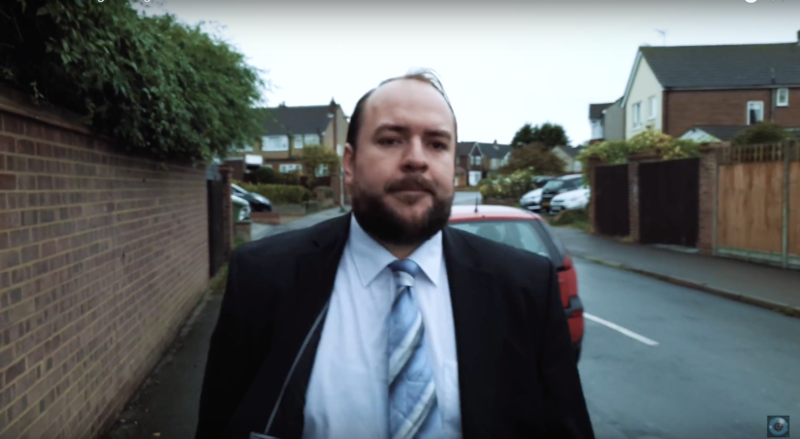
The cloud was quite thick and consistent. The cloud cover reduced the strength of the light, which helped when setting shutter speed. I was shooting at 25fps and wanted to keep the shutter speed at 1/50th. This would give some motion blur and stop the movement looking too crisp.
The light was too bright for 1/50th, but I was able to keep it close enough by reducing the ISO (gain) to its lowest level. If the sun had been brighter, I would have had to have set a faster shutter speed. This would have reduced motion blur, so any movement starts to look harsh on the eye.
Interior
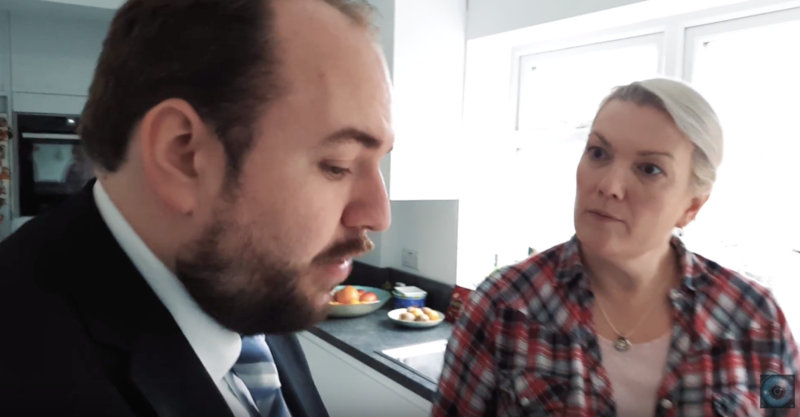
We decided to film in the kitchen for the extra light it provided. The kitchen which had quite big windows and a glass door, letting in light. The problem was, when shooting towards the windows, the windows bleached (as above). So I tried as much as possible to keep the camera angled away from the windows.
Digital camera sensors are not as sensitive to light as the human eye, so they struggle to deal with contrasts. The brighter it is outside, the more those windows are going to bleach out.
Solutions are 1) put more light inside or 2) shoot when the light outside is lower (during sunrise or sunset, for example). We used the 2nd option in Episode 1, during this scene:

We filmed the above scene as the sun was going down. This means, the light outside is at a similar level to the light in the room. Now, we are able to expose both the interior and the exterior simultaneously, and the houses outside create an interesting background.

Location 2 – car interior
We had a brief scene in a car, with dialogue. I filmed on my own, using the Rode mini shotgun mic which clips into the headphone socket of the phone.
Luckily, the cloud cover continued, meaning the street outside the car doesn’t burn out.
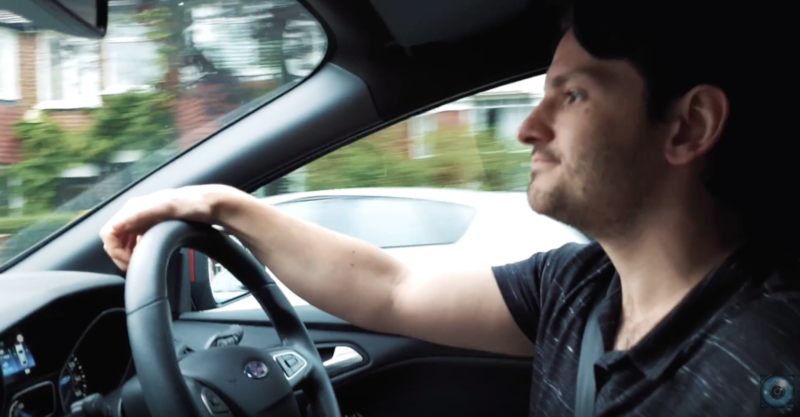
You can see from this frame grab above, the lighting inside and outside the car is quite even.
Location 3 – interior
This location was a self-contained apartment/hotel room. The room was pretty small and lighting options were limited.
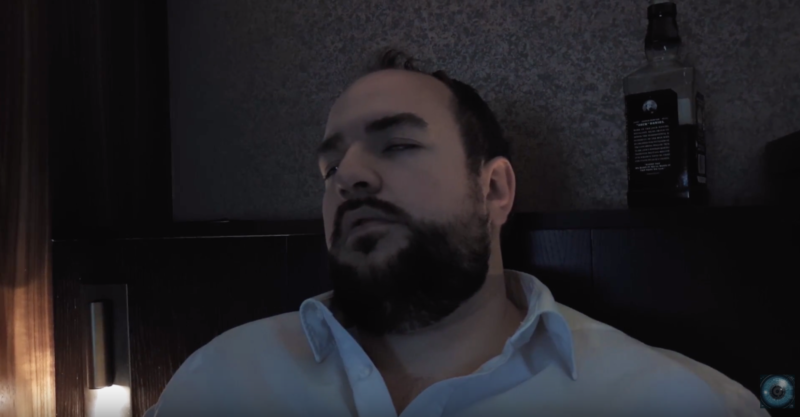
It was a night scene, so we couldn’t use light from the window. We had 2 bedside lamps and some overhead light. We also had to shoot the wall-mounted TV for an insert.
I wanted the light to be low and moody. So I kept the main lighting off and switched off one of the bedside lights. Plus we had the TV, so we had some flickering light coming from that, too.
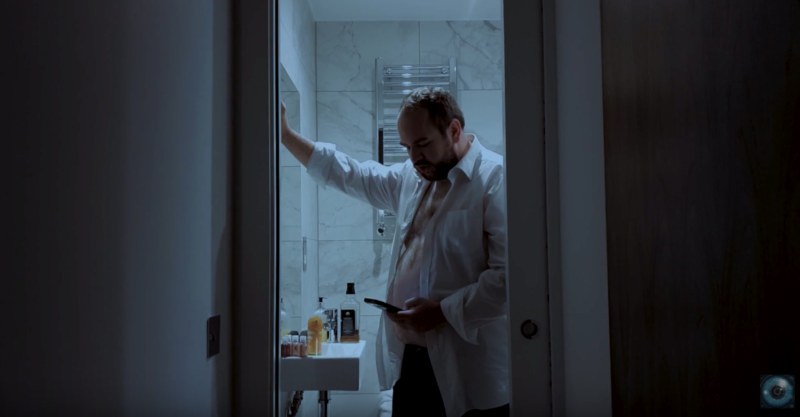
The lighting in the bathroom was basically on or off. It was also very small. So I used the door to frame the actor (Roger). This kept the scene moody, fitting the emotion of the scene. If I had filmed closer, the light would have been more washed out and harsher.
This framing also adds to the loneliness of the character. He looks isolated in the frame. Dark shadows surround him. I like the way the light reflects from behind him, picking out the edges of the subject.
Perhaps if you had a lighting rig and technicians you would be tempted to use filler lights to show more of the actor’s face. Would it be better? I don’t think it would.
So, for me, this is a good example of how to use available lighting in an artistic way, to help express the emotion of the scene.
Location 4 – Interior
Filming on a public underground train. We looked for a carriage that wasn’t too busy, so we could place our annoyed commuter (Andrea) next to Roger, without hassle.
For lighting, there’s not much we could do here. There was enough light to set exposure as I wanted (25fp at 1/50th).
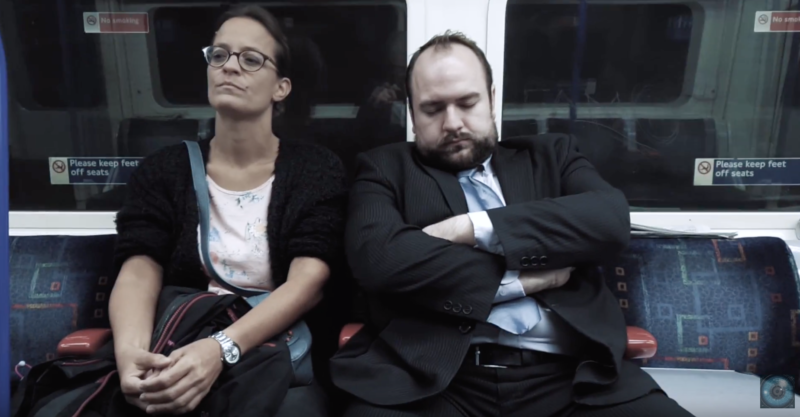
Good thing about shooting underground is there’s no daylight bleaching out the windows. (Yes, you can see my hand holding the camera reflected in the window)
Location 5 – Interior
The next location was another (small) hotel room. Again, I had no idea what the room would look like before we arrived. We spent a few minutes working out where Henk could lie to make the most of the daylight from the window. Plus we had a few more options with the room lights – 2 bedside lights, light from the bathroom, a table lamp and overheads.
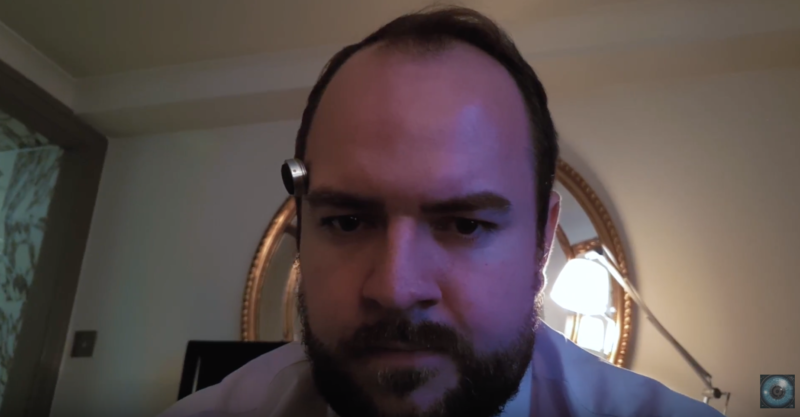
I decided to (roughly symmetrically) frame Roger with circular mirror behind his head. The lamp also creates some background interest.
This story is all about the mind, and a technology which allows Roger’s character to see the thoughts of another person. So I felt the circular mirror helps to give a sense of Roger’s mental process. The mirror “halo” also creates a sense of Roger being a kind of Jesus figure, healing the sick.
You can also see we are getting daylight from the window (from the right of this frame). If you had a lighting set up, you might want to add some fill to the left of Roger’s face. Looking at this shot now, it would perhaps be nice to add some attention to Roger’s eyes with a small light. Those eyes are focusing so intently, it might add a little extra drama to the scene to highlight them.

For this shot, you can see we turned off the bedside lamps. Having them on in the background dominated the shot. We also had to have Henk across the bed (rather than lengthways, as would be expected), so he could face the light from the window.
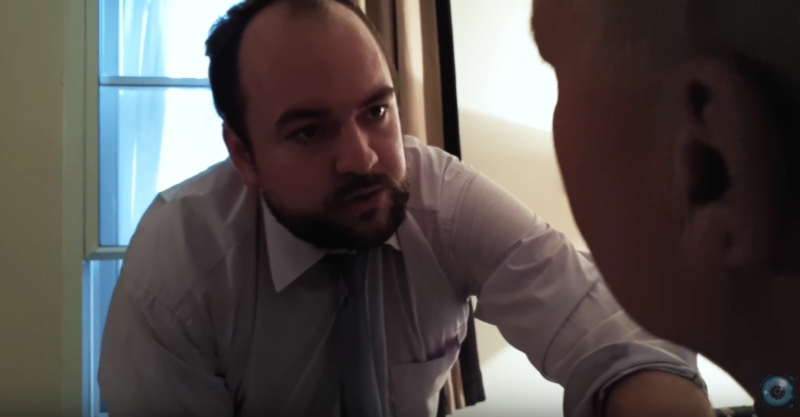
With the reverse of this shot, you can see the bedside lamp now comes into play. We have Roger with the window behind him – which is something you really need to avoid. But using the lamp, we managed to get some light picking out the side of his face.
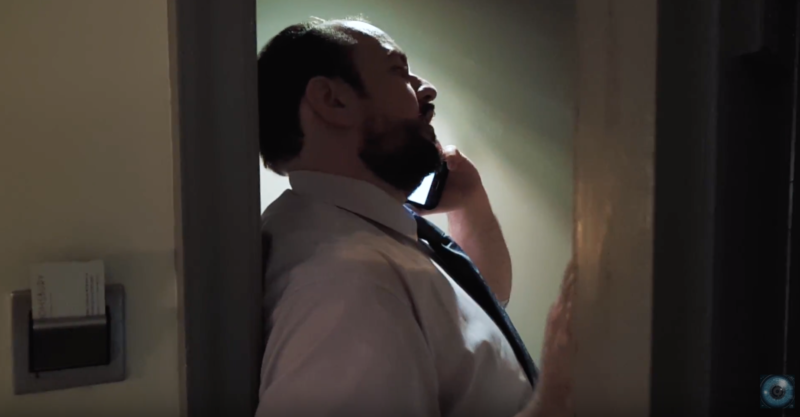
In the scene, Roger finally gets to take the call from his girlfriend (played by Caroline Oakes). At first, Roger was simply standing by the door, with the door closed. This looked really dull.
So I asked Roger to open the door and stand half in-half out, as he takes the call – as if he’s making a half-hearted attempt to get some privacy. As a result, the shot become much more interesting. I was able to frame Roger in the door, plus the downlight in the hall adds highlights and depth to the shot.
It’s also thematically reminiscent of the previous shots in the bathroom, where Roger is also trying to make contact with his girlfriend.
So, this is another case of improvising and incorporating visual ideas into a scene to make it part of the story.
Location 6 – Exterior, Night
For this scene, Roger has to take a call. We shot this just the 2 of us, as I was mic-ing it with the Rode mini shotgun. Plus Roger was talking into his phone, so he could use it to record audio too.
Roger had the idea of walking from this random front door, as if this was his house. Nobody came out to tell us off, so we got away with it.
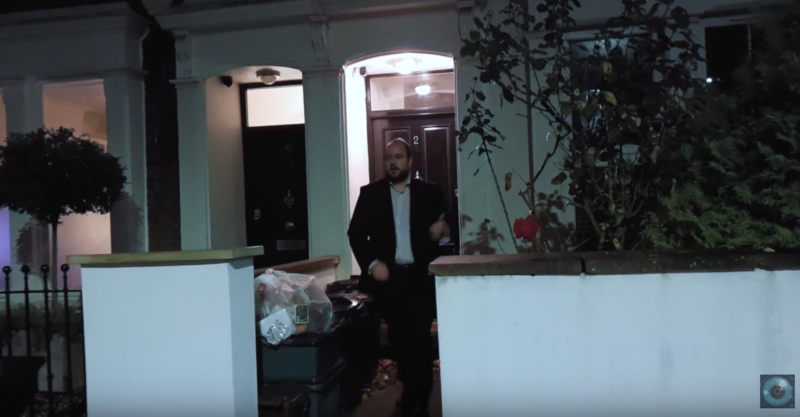
Using my Zhiyun gimbal, I tracked Roger out of the house and round the corner. We worked out a good place for him to have the phone conversation so he would be under the streetlamp.
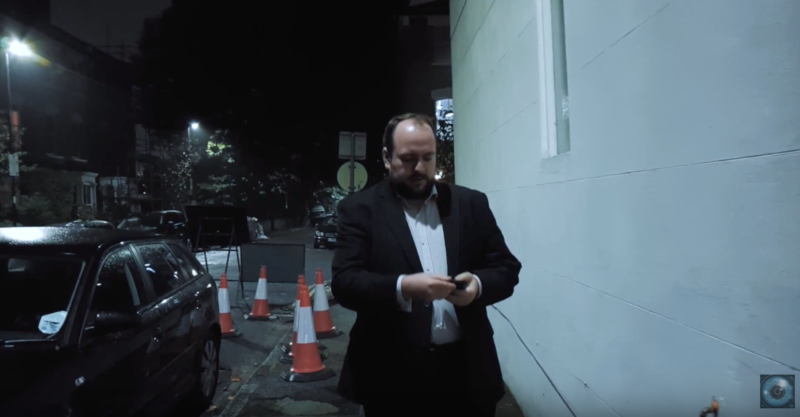
The streetlamps were pretty powerful, giving us a strong white light. We were also lucky with the moisture in the air from the recent rain, giving the streetlamps that nice atmospheric glow. And look at the street corner we found with roadworks signs and cones, which adds some extra character into the background.
Location 7 – Interior, Night
We had no permission to film in this pub. It was open and busy on a quiz night. Luckily, this table was available which had some nice lighting. I asked Caroline to sit there and act as if she’s waiting for someone.
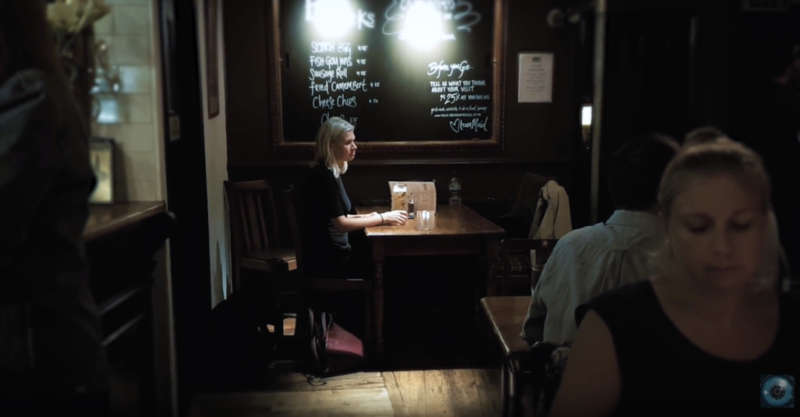
Then I tried to film without anyone noticing. For that reason, I didn’t use any gimbals or extras for this shot. To the left of me was a bar, with a bunch of people ordering drinks.
I really liked the way this shot fits with the theme of the story. Caroline looks lonely and isolated. And those lights shining down on the blackboard really work. Lighting Caroline’s face but leaving everyone else in shadow, just adds to the feeling that she is alone in her life and her thoughts.
And remember, we spent no more than 20 minutes glancing around the pub before we set on this scene and started filming.
Location 8 – Interior, Night
We had a corridor and a bathroom to work with. The lighting was pretty rough and we didn’t have many options. However, I felt it added to the “real” feeling of the scene. So I used the camera in a spontaneous way, to increase the feeling of this happening “live”.
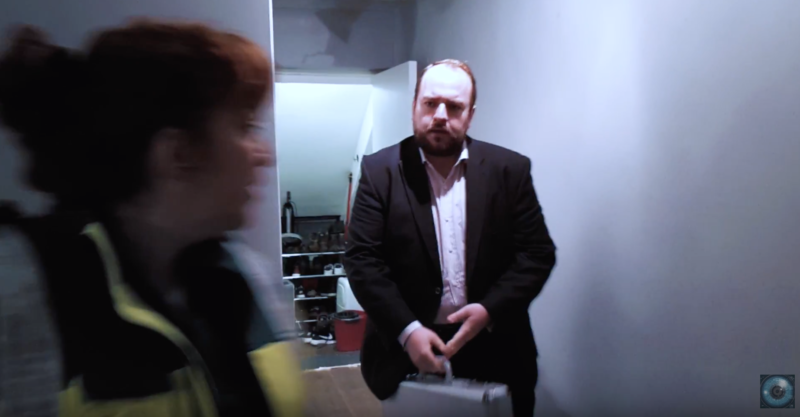
There’s no subtle light here. All we had was this over head lamp. But this reflects the emotion of the scene – which is an emergency situation where a man is threatening to take his own life.
I like to shoot scenes in one go, if possible. So for this scene, Roger enters, moves down the corridor as he’s talking to the paramedic. When he arrived at the door to the bathroom where he has a conversation with Emilio (playing Andrew), there wasn’t enough light – the scene was dull and flat.
So we brought a lamp on a stand from the living room and moved it around a bit, until we had just enough extra light to look natural.
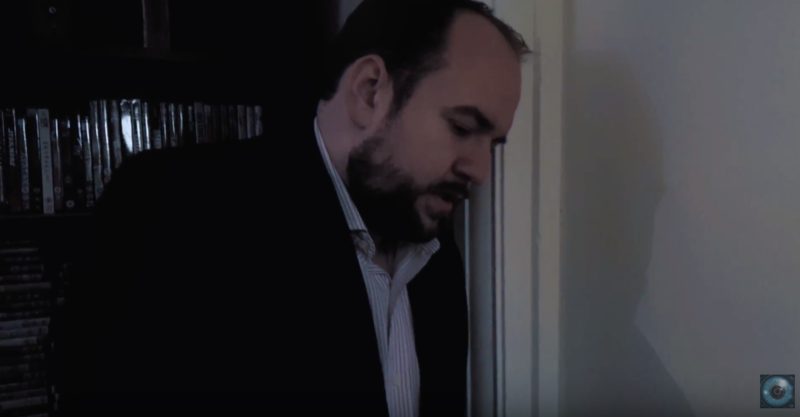
Meanwhile, on the other side of the door, David was filming with the second Samsung S9. This way we could film the entire scene in single takes and capture the performances from both actors.

Again, our lighting options in the bathroom were basically on or off. With one bright light and white walls, this creates quite a harsh experience for the viewer. However, this fits with what we wanted to achieve with the scene: it’s real, urgent and live.
Location 9 – Exterior, Night.
Not only were we filming inside this pub, we also filmed outside too. We had some orange streetlamps and soft light coming from within the pub. For me, this really works for the scene which is a conversation between a couple. With their faces in deep shadow, we create a scene of intimate soft whispers and hidden emotions.

The scene then moves on to an old railway bridge. Even though the scene is dark, it also works beautifully for the scene.
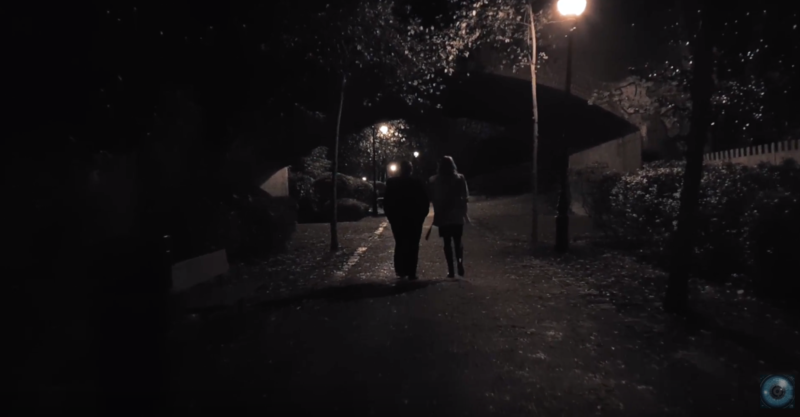
Again, the feeling is intimate and private. I tried to frame the bridge and lights, so the streetlamps were like stars in a night sky, adding depth to the image.
For reference, here’s a shot from The Killing of a Chinese Bookie (1976), by John Cassavetes.
In these scene, they’re inside a car. Club owner Cosmo Vittelli (Ben Gazzara) has found himself on the wrong side of a gambling debt to some mobsters. And they decide to claim repayment by getting him to assassinate the Chinese bookie.
For me, the unconventional low lighting in this scene makes it even more sinister. There’s a point where they pass him a pistol to do the deed, and you can only just see it in deep shadow. This makes the moment even more powerful, to my mind, as you question your own eyes (as the character might), “Is that a gun?!”
Filming with nothing but available light forces you to think creatively. When you think creatively you start thinking about the story. Sometimes, when we are trying to do what film school taught, we’re not thinking creatively. We’re just trying not to “do it wrong” – ie: follow the rule book. Why? Because we are afraid people will think we don’t know what we’re doing.
As it turns out, The Killing of a Chinese Bookie is Cassavetes metaphor for exactly that. The hero, Cosmo, is being set up by a gang who think he doesn’t know what he’s doing. They expect him to get killed trying to kill the bookie. Except he turns out to be better than the gang at this sort of thing.
Cassavetes even admitted whilst filming that Cosmo represents himself and the gang are the film industry, who dismissed him as an “amateur”.
Location 10 – Exterior, Night
For this scene, we were creating a TV interview situation, which would be inserted into the end scene. At first, just using the streetlamps for light, something seemed to be missing. Then I realised – in a TV interview, the camera op would most likely have a light clamped to the top of the camera, shining light directly and crudely onto the subjects.
So that was easy to set up. We simply used a flashlight from one of our phones and aimed it at the 2 actors.
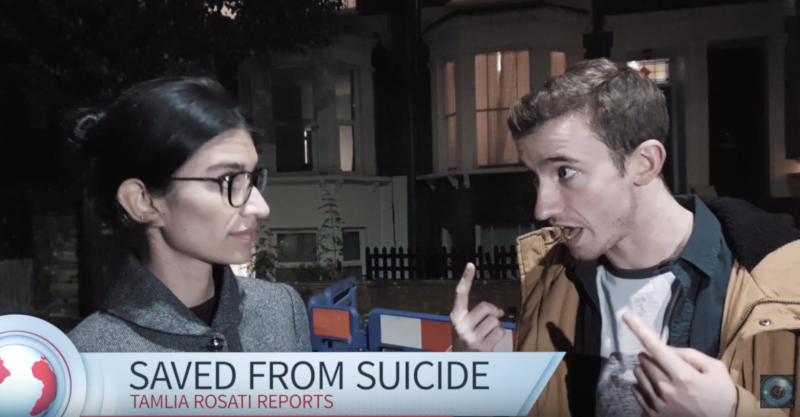
Find out more about Silent Eye.
Eager to learn more?
Join our weekly newsletter featuring inspiring stories, no-budget filmmaking tips and comprehensive equipment reviews to help you turn your film projects into reality!
Simon Horrocks
Simon Horrocks is a screenwriter & filmmaker. His debut feature THIRD CONTACT was shot on a consumer camcorder and premiered at the BFI IMAX in 2013. His shot-on-smartphones sci-fi series SILENT EYE featured on Amazon Prime. He now runs a popular Patreon page which offers online courses for beginners, customised tips and more: www.patreon.com/SilentEye


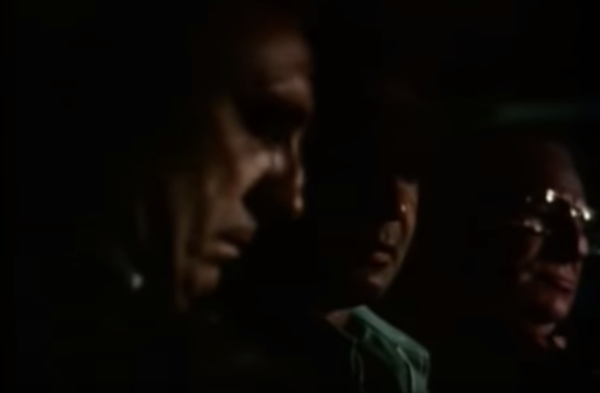
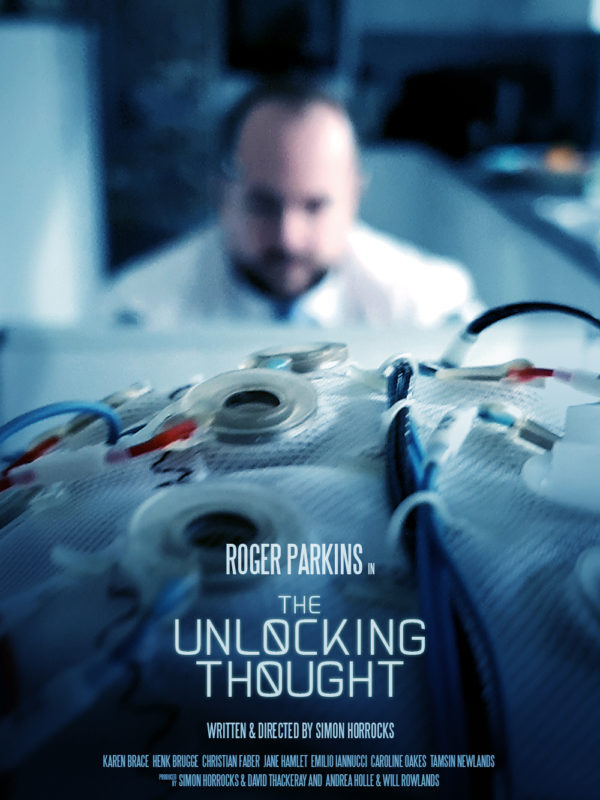
[…] Lighting for Video – on a Microbudget November 26, 2018 […]